
About Andrew Cusack
 Writer, web designer, etc.; born in New York; educated in Argentina, Scotland, and South Africa; now based in London.
Writer, web designer, etc.; born in New York; educated in Argentina, Scotland, and South Africa; now based in London. read more
News
Blogs
Reviews & Periodicals
Arts & Design
World
France
Mitteleuropa
Knickerbockers
Argentina
The Levant
Africa
Cape of Good Hope
Netherlands
Scandinavia
Québec
India
Muscovy
Germany
Academica
Into the Qadisha Valley
THE HOLY VALLEY cuts down like a gash in the earth, with the cathedral city of Bcharré on the clifftop, almost hanging off of it. One almost wonders if you started building at the other end of the town, it might force St Seba’s Cathedral off over into the deep beyond. There is something almost Lord of the Rings about the setting, a Levantine Minas Tirith, if only Tolkein had been a Maronite.
The Qadisha Valley (Ouadi Qadisha, وادي قاديشا, literally the “Holy Valley”) takes its name from the Aramaic word for saintly and for over a millennium its natural caves have provided shelter for hermits seeking solitude as well as others seeking refuge and safety. Evidence of human habitation dates back to the Paleolithic era, and the Qannubin Monastery here is said to have been founded by the Emperor Theodosius the Great in the fourth century. While this is the holiest ground of the Maronite Catholics, hermits living in these caves and in these monasteries have been Melchite, Nestorian, Armenian, Syrian Orthodox, and Ethiopian. When the Monastery of St Maron was sacked by Antiochene Monophysites, many monks fled to the Qadisha Valley, strengthening the presence of this Eastern church which has always remained in communion with Rome. For over five hundred years, the Maronite patriarch made Deir Qannubin his seat. (Since 1830 the Patriarchate has been based at Bkerké above the pleasant Mediterranean city of Jounieh).
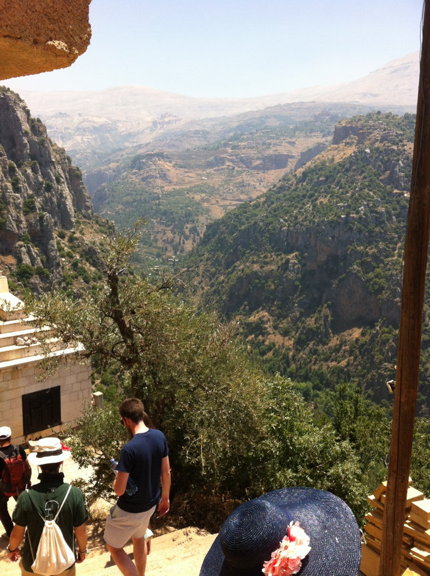
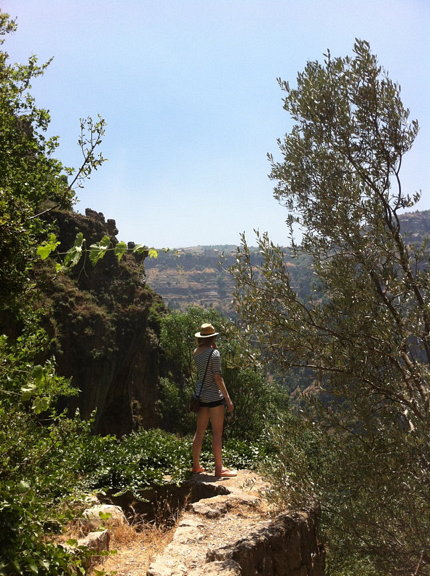
It was a hot summer’s day when we arrived and as chance had it we couldn’t even get very far into Bcharré.
“A man has died. We can’t go on,” the driver mysteriously intones. (A funeral procession is underway).
Very well. We carry on down circuitously weaving through the outer-lying portions of the town, through a small necropolis, and then finally into the valley proper. While the Qadisha valley attracts many pilgrims and travellers, this is not some easy tourist route, though nor is it difficult as hiking goes (unless, like us, you have a partially blind Paralympian among your party).
Up and down you go amongst small rivulets and meandering paths joining and divorcing from your own, led by a guide who speaks neither French nor English (thank God our Lebanese friends were with us).
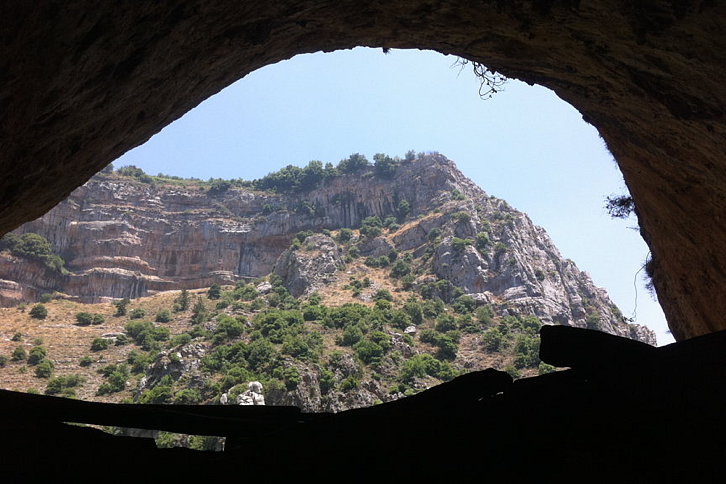
Eventually, having passed a considerable way down, and then up a little ways, we are taken to a cave which has been segmented with stone walls into a chapel.
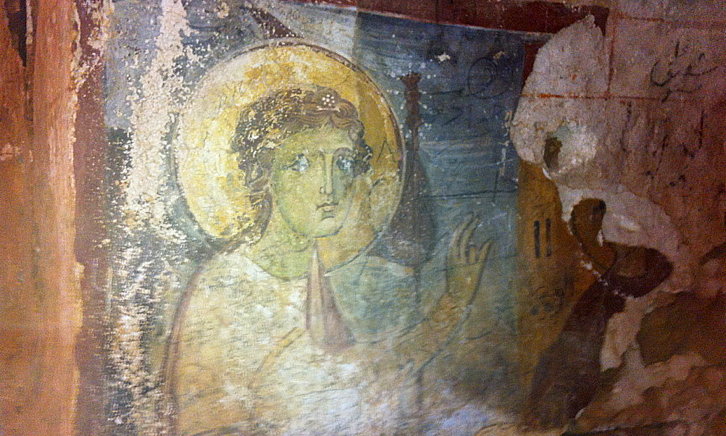
Much to my surprise, murals still survive in this exposed environment, protected by the overhanging rock.
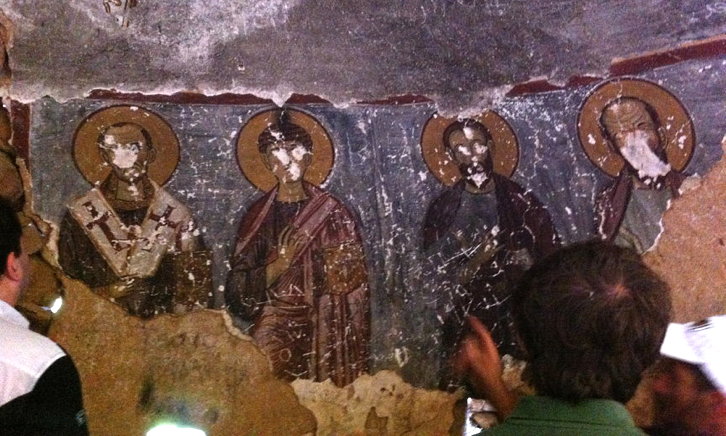
The iconoclastic damage looked quite recent, and our guide explained it probably dated from as recently as the Syrian occupation (1976–2005).
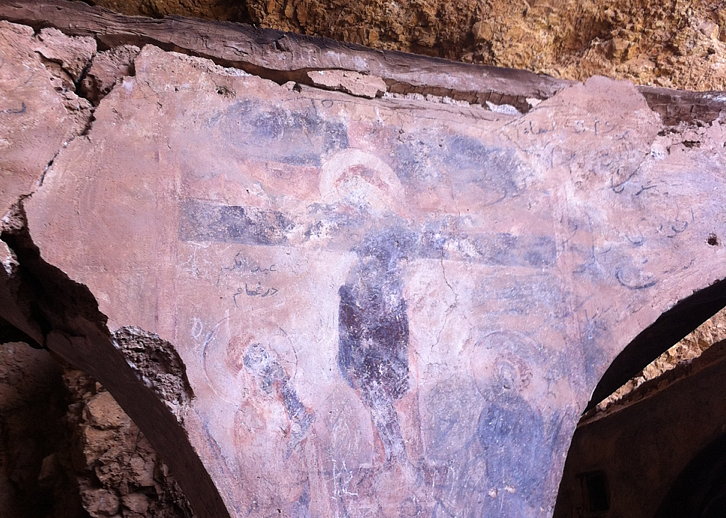
Monasticism began in the East, of course, and Western monasticism is a slightly different kettle of fish. While hermits once lived in these caves, almost all of today’s Qadisha monks are gathered into the formal Maronite communities (Baladites, Aleppians, and Antonins) or into the other non-Maronite monasteries in the valley.
Brushing the dust of the Qadisha Valley from my shoes at the end of the day, I wondered if the first monks slapped their sandals together, discarding the very same sand sixteen hundred years earlier after they finished their Liturgy of the Hours for the day (though I somehow doubt it).
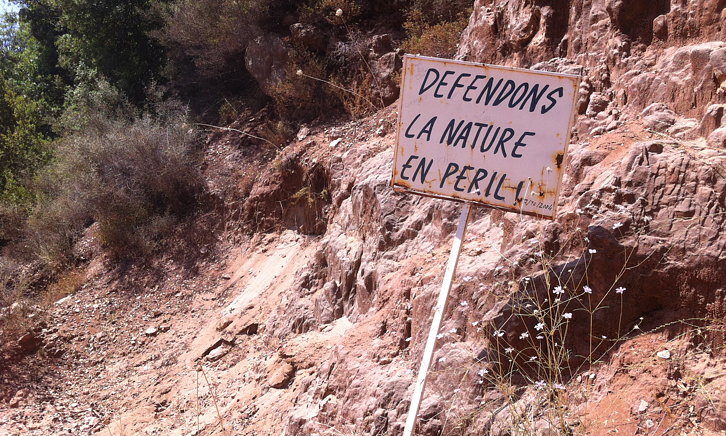
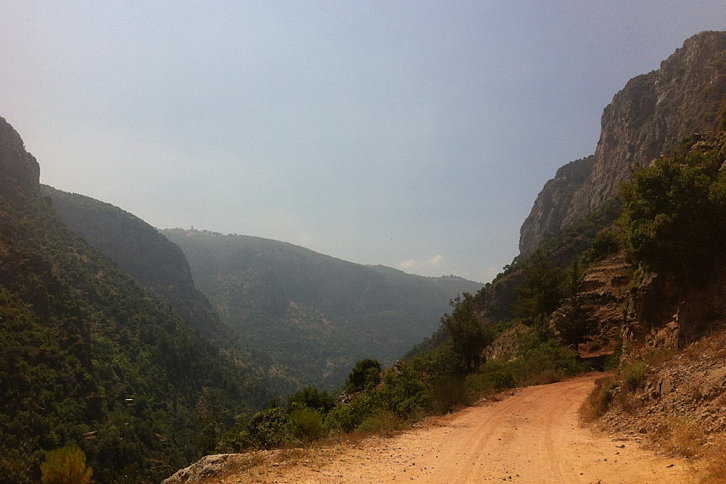
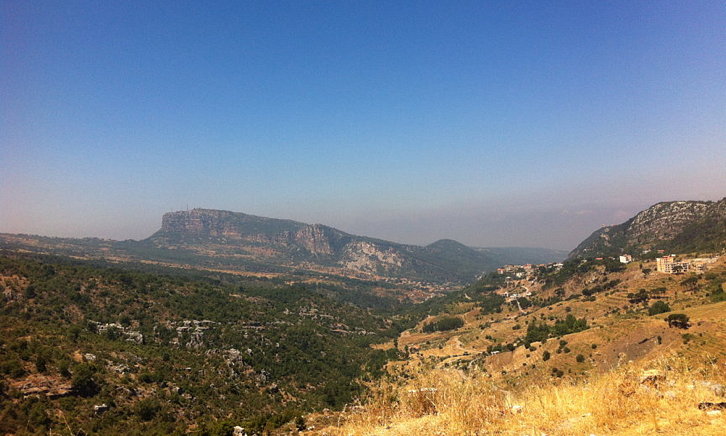
Search
Instagram: @andcusack
Click here for my Instagram photos.Most Recent Posts
- Burns Tower April 19, 2024
- Patrick in Parliament March 18, 2024
- Articles of Note: 13 March 2024 March 13, 2024
- Cambridge March 9, 2024
- Taken on Trust March 4, 2024
Most Recent Comments
Book Wishlist
Monthly Archives
Categories

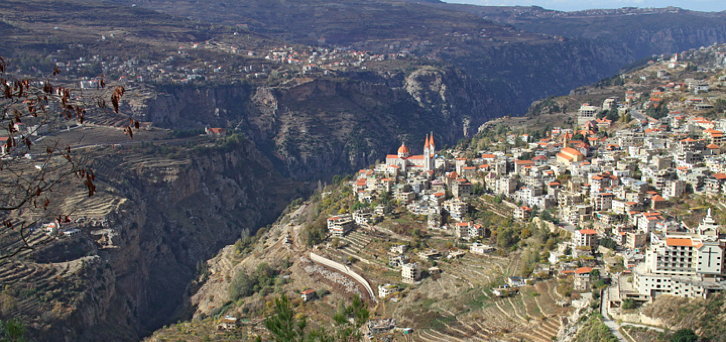


In the 7th century it was settled by Christian monks who established in almost unreachable limestone caves to lead frugal lives. A number of monasteries were built in this area, the most important of which are Deir Qannoubin, an ancient seat of the Maronite Patriarchate; Deir Qouzhayya, site of the first printing press in the Middle East and Deir Mar Elisha, where the Maronite Order of Lebanese Monks was founded in 1695. The only way to explore the gorge is on foot. A slight vehicular road descends to the bottom, but it is more fun to take one of the paths from the villages of Tourza, Blawza, Hadchit, Hasroun and Diman. The Qadisha River, whose source is the Qadisha Grotto, runs through the valley, continuing down to Tripoli where it becomes the Abu Ali River. Few years ago, the canyon became under the protection of the UNESCO, classified as international patrimonies for the humanity.
How beautiful!!
Wonderful, Cusack, & much appreciated.